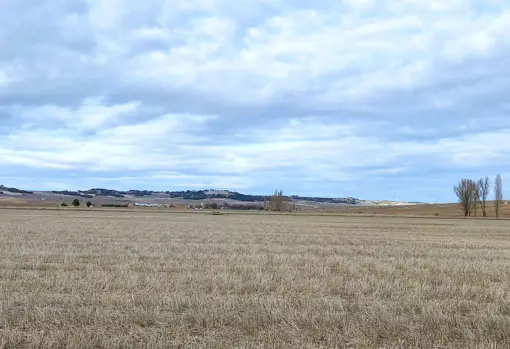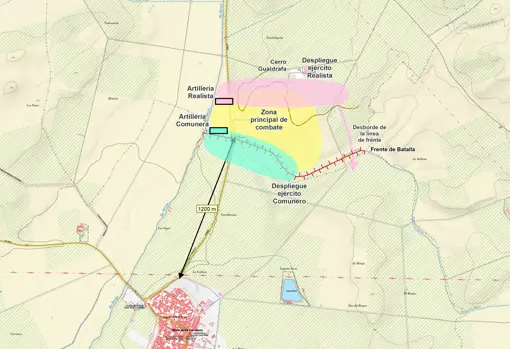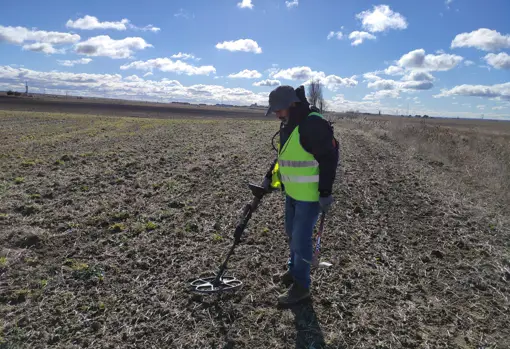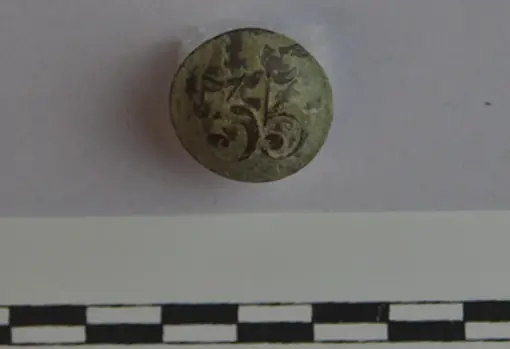![]() CONTINUE
CONTINUE
More than 500 years have passed since his camp next to the Valladolid town of Villalar became the scene of a decisive battle in the future of the History of Spain. In that wide plain, the troops loyal to King Carlos V sentenced the comunero movement in 1521, which, although it barely survived for a while longer, could not overcome that resounding defeat due to the execution of its leaders Juan Padilla, Juan Bravo and Francisco Maldonado. That April 23 was recorded in the memorial of what is now the autonomous community of Castilla y León, which chose the anniversary for his party. But that date also left indelible marks on the land where hundreds of men lost their lives, scars that neither time nor plowshares have erased.
In a recent archaeological study carried out by the company Patrimonio Inteligente SL, a decade of pieces associated with the struggle have been recovered, such as several spherical labor projectiles used for the arquebusiers, 1,5 centimeters in diameter and between 14 and 16 grams of weight. peso, including one deformed by the impact, as well as some coins of the Catholic Monarchs that were legal tender at the time. “They are obvious evidence attributable to the battle,” archaeologist Ángel Palomino tells ABC, satisfied with having managed to contribute “archaeological material” to what was known about the confrontation.
 Panoramic view of the Villalar battlefield with Marzales in the background – Patrimonio Inteligente SL
Panoramic view of the Villalar battlefield with Marzales in the background – Patrimonio Inteligente SL
The survey of the area with metal detectors and georeferencing systems has allowed us to better understand how the battle took place. According to the account of the events, collected by chroniclers of the time such as Pedro Mártir de Anglería, Juan Maldonado, Pedro Mejía, official chronicler of Emperor Carlos V, or Alonso de Santacruz, the community troops left the Torrelobatón castle at dawn on the 23rd of April bound for bull. Although their forces, between 6.000 and 7.000 men, were similar in number to the royalists, the commoners' ranks were made up mostly of infantrymen supported by some artillery they had gathered and some 500 horsemen. Carlos Belloso Martín, professor of History at the Miguel de Cervantes European University in Valladolid, explained that there will be a less well-trained and less well-armed army, while the royalist troops gathered by the nobles in neighboring Peñaflor de Hornija had more experience in the art of the war and were far superior in cavalry, numbering over 2.000 mounted soldiers. Aware of their shortcomings, the community members thought that in Toro, a day's journey, they could protect themselves better.
In which case, the observers of the royalist band, so the community forces were leaving Alba Torrelobatón, gave notice to the Constable of Castile, Íñigo Fernández de Velasco, the staff is in Peñaflor, whom they decide to send to the cavalry, with something field artillery, in pursuit, ahead of the infantry. That day it rained persistently, a factor that played against the community members. The rain made it difficult for the tanks and artillery pieces to advance on those muddy terrains and also wet the gunpowder and the fuses of the arquebusiers.
 Map of the Villalar Battlefield – Smart Heritage SL
Map of the Villalar Battlefield – Smart Heritage SL
Archaeological investigations have shown that the communities formed a front line on the Los Molinos stream, entrenching themselves in a ravine to try to contain the advance of the royalists who arrived from the north, from the town of Marzales. “That is where the positioning of the front takes place, where the community artillery makes some unloadings, in very bad conditions due to the rain, and from there, from Puente el Fierro to Marzales is where Padilla makes several incursions and where the main skirmishes take place. Palomino explained. The projectiles found in the surroundings of the Los Molinos stream and in the direction in which the community arquebusiers seem to indicate that they disappear.
"A Hunt"
It is known how long they would be able to hold out before the royalist cavalry breaks that line and a rout among the community members occurs. Since then, more than a battle was "a hunt", according to experts. With the rain wetting the gunpowder, without the possibility of moving the cars through the mud, and facing a much more numerous and professional cavalry, Padilla's men could do little. "Between the stream and Villalar is where the massacre of the community members takes place," says Palomino.
It has come to be thought that perhaps some managed to gain a foothold in Villalar, firing an artillery piece, but the archaeologist clarifies that according to the surveys carried out "it does not seem that this happened." "Some probably made it to town, but in swarms." The royalist cavalry was far superior and in an open field area the comunero soldiers were helpless before those galloping horses that were thrown at them. The chronicles refer to the fact that many community members changed sides, taking off the red crosses they wore in rebellion.
 Work process of an archaeologist with a detector – Archaeological Heritage SL
Work process of an archaeologist with a detector – Archaeological Heritage SL
"Although climatologically it rained for both sides, the superiority of the royalist side in cavalry that day, at that time, in that place, perfect for some charges, had the upper hand," says the historian of the Miguel de Cervantes University . With no place to defend themselves, with their artillery damaged by the rain, with their ranks plunged into chaos, the comuneros found themselves hopelessly defeated. Some chroniclers speak of some 500 casualties on the commoner side. His captains were seized and executed the next day.
This is the first attempt to approach the archaeological reality of the battle of Villalar by means of magnetic detection, which has yielded "interesting" results, in the opinion of the Intelligent Heritage team, which give rise to later, more extensive and intensive training investigations. Until now, how much was known about the battle procedure from documentary sources and not very precise about the event, Palomino explained. «There was a 'damnatio memoriae' and an important silence during the reign of Carlos V and Felipe II».
Possible crossbow point found – Patrimonio Inteligente SL
Juan Martín Díez, el Empecinado, prepared a file in 1821 "very clear about it," continues the archaeologist. Although 300 years had passed, he saved the memory of obtaining daggers, swords or helmets in the area. Archaeologists have now found a tool used by arquebusiers to make projectiles and a crossbow point, among the hundred-year-old pieces from different eras that they have come to locate.
Some of them come from the military camp that was installed in the Villalar el Empecinado field during the commemoration of the third centenary of the battle. "Some store pikes and some regimental buttons have come out that have to do with that military parade in 1821," Palomino said.
 Regimental button from the time of the Stubborn – Patrimonio Inteligente SL
Regimental button from the time of the Stubborn – Patrimonio Inteligente SL
Clemente González García, an arch specialist in the archaeological study of battlefields, has collaborated in the survey commissioned by the Junta de Castilla y León last year, on the occasion of the V Centenary of the commemoration of the battle. In this first show, for example, the location of the pit where the fallen in battle ended up has not been investigated. Existens reference to the burial of the remains in the surroundings of one of the churches of Villalar. “We are considering addressing it in a broader research project,” Palomino advances. The recent finds encourage archaeologists.
